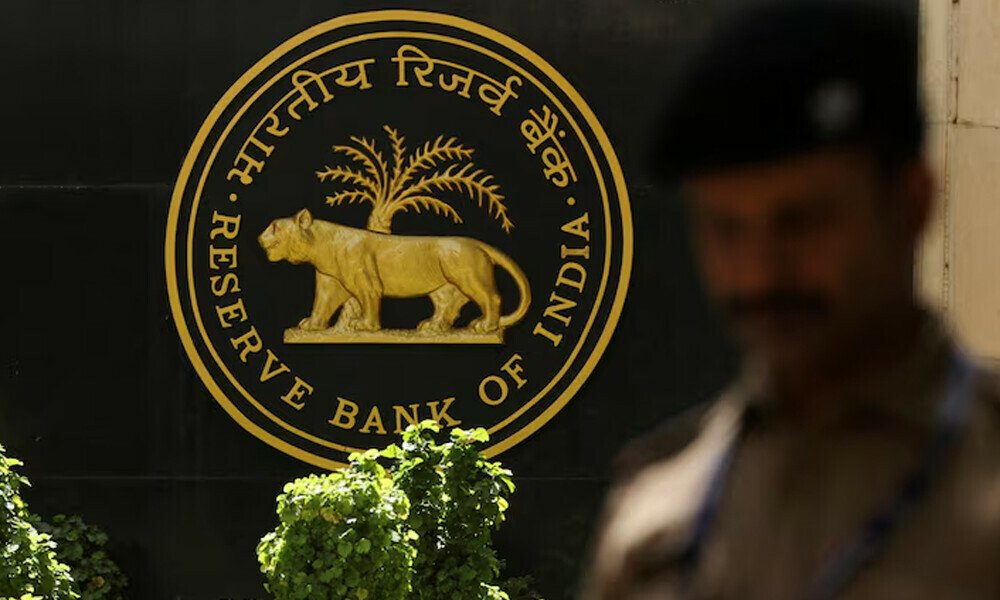In a significant monetary policy shift, the Reserve Bank of India (RBI) has cut its key repo rate for the first time in nearly five years, aiming to stimulate economic growth amid slowing expansion and a moderating inflationary environment.
The Monetary Policy Committee (MPC), which consists of three RBI officials and three external members, decided unanimously to reduce the repo rate by 25 basis points (bps) to 6.25%. This marks the first reduction in India’s key lending rate since May 2020, after it remained unchanged for eleven consecutive policy meetings.
The decision aligns with market expectations, as a Reuters poll had indicated that 70% of economists anticipated a quarter-point rate cut. However, while the rate reduction is a welcome move for businesses and borrowers, analysts remain cautious about its long-term impact on economic recovery.
Why Did the RBI Cut the Repo Rate?
The decision to cut the repo rate—the rate at which the RBI lends to commercial banks—was driven by a combination of slowing economic growth, easing inflation, and global monetary trends.
- Slowing GDP Growth
- India’s economic growth has been losing momentum, with GDP expansion projected at 6.4% for the fiscal year ending March 2025, its slowest pace in four years.
- The economy has been weighed down by a sluggish manufacturing sector, weak corporate investment, and global headwinds affecting exports and trade.
- The RBI estimates that growth will improve slightly to 6.7% in the next fiscal year, but uncertainties remain.
- Easing Inflationary Pressures
- Retail inflation remains high but has been gradually declining.
- Inflation eased to a four-month low of 5.22% in December, and the RBI forecasts it will average 4.8% in the current financial year, before declining further to 4.2% in 2026.
- Food inflation pressures are expected to ease, supported by strong agricultural output after a favorable monsoon.
- Monetary Policy Trends in Global Markets
- The US Federal Reserve and European Central Bank (ECB) have signaled that rate cuts could begin later in 2025.
- Central banks in China, Japan, and South Korea have also maintained or eased their monetary policies to support economic recovery.
- The RBI’s decision follows this global trend, ensuring India remains competitive in attracting foreign capital and maintaining financial stability.
What This Rate Cut Means for India’s Economy
1. Boost for Borrowers and the Housing Market
Lower interest rates make borrowing cheaper, encouraging businesses and individuals to take loans for expansion, home purchases, and investments. The rate cut is expected to:
- Boost the real estate sector, as home loan rates become more attractive.
- Encourage corporate investments, especially in infrastructure and manufacturing.
- Support small and medium enterprises (SMEs) struggling with high financing costs.
2. Impact on Stock Markets and Currency
Following the announcement:
- India’s benchmark equity indexes gained 0.2%, as investors reacted positively to the move.
- The rupee strengthened to 87.38 against the US dollar, reflecting improved investor sentiment.
- The 10-year government bond yield rose slightly to 6.69%, as markets adjusted to the policy change.
3. Implications for Inflation and Savings
While lower interest rates encourage spending, they also reduce returns on fixed deposits and savings accounts.
- Consumers benefit from lower loan EMIs (equated monthly installments), but retirees and fixed-income investors may see lower returns on savings.
- The RBI must carefully balance stimulating growth while ensuring inflation does not rise sharply due to increased consumer spending.
Challenges and Risks Ahead
Despite the rate cut, several challenges and risks could impact its effectiveness:
1. Energy Price Volatility
RBI Governor Sanjay Malhotra highlighted energy price fluctuations as a key risk to inflation.
- Global crude oil prices remain volatile, impacting fuel and transportation costs.
- A spike in oil prices could reverse inflationary gains, forcing the RBI to reconsider further rate cuts.
2. Banking Sector Stability
While lower interest rates boost borrowing, they also reduce banks’ profit margins.
- Banks may become more selective in lending, limiting the impact of the rate cut.
- Non-performing loans (NPLs) in certain sectors, like real estate and construction, remain a concern.
3. Global Economic Uncertainty
India’s economy is deeply connected to global markets, and external shocks—such as a slowdown in China, US interest rate hikes, or geopolitical tensions—could limit the effectiveness of monetary easing.
Comparing India’s Rate Cut to Other Economies
The U.S. Federal Reserve and ECB
- The Federal Reserve has kept rates steady at 5.25%-5.50%, but officials indicate possible rate cuts in mid-to-late 2025.
- The European Central Bank (ECB) is also expected to ease rates later this year to counter sluggish growth in the Eurozone.
China’s Approach
- The People’s Bank of China (PBOC) has been aggressively cutting rates and injecting liquidity to boost economic recovery after a property sector crisis and weak consumption trends.
Emerging Markets Trends
- Brazil, South Korea, and Indonesia have also signaled dovish monetary policies, reflecting a broader shift toward supporting growth amid global uncertainties.
Future Outlook: Will There Be More Rate Cuts?
1. RBI’s Stance on Further Cuts
The MPC maintained a “neutral” policy stance, indicating that:
- Future rate cuts will depend on inflation trends and economic growth.
- If inflation continues to decline towards the 4% target, the RBI could ease rates further.
2. Growth Projections for 2025-2026
- The Indian government expects GDP growth of 6.3%-6.8% next year, with support from:
- Improving employment conditions.
- Recent corporate tax cuts.
- Stable consumer demand and investment inflows.
- RBI’s forecast of 6.7% growth in 2025-26 is slightly optimistic, considering global economic headwinds.
3. Inflation Targets and Risks
- The RBI aims to keep inflation in check while ensuring sufficient liquidity for growth.
- Food and energy prices will be closely monitored, as they are key drivers of inflation volatility.
Conclusion: A Calculated Move Amid Economic Uncertainty
The RBI’s first rate cut in five years is a strategic response to India’s slowing economy and easing inflationary pressures. By lowering the repo rate to 6.25%, the central bank aims to stimulate borrowing, investment, and economic activity, while balancing inflation risks.
However, the effectiveness of this rate cut depends on several factors, including global economic conditions, banking sector response, and inflation stability. While businesses and investors welcome the move, policymakers must remain cautious about potential risks in the coming months.
As India navigates its economic recovery, the RBI’s approach will be closely watched by global markets, businesses, and policymakers, shaping the future trajectory of monetary policy in one of the world’s fastest-growing economies.
Ready to take your career to the next level? Join our dynamic courses: ACCA, HESI A2, ATI TEAS 7 , HESI EXIT , NCLEX – RN and NCLEX – PN, Financial Literacy!🌟 Dive into a world of opportunities and empower yourself for success. Explore more at Serrari Ed and start your exciting journey today! ✨
photo source: Google
By: Montel Kamau
Serrari Financial Analyst
7th January, 2025
Article, Financial and News Disclaimer
The Value of a Financial Advisor
While this article offers valuable insights, it is essential to recognize that personal finance can be highly complex and unique to each individual. A financial advisor provides professional expertise and personalized guidance to help you make well-informed decisions tailored to your specific circumstances and goals.
Beyond offering knowledge, a financial advisor serves as a trusted partner to help you stay disciplined, avoid common pitfalls, and remain focused on your long-term objectives. Their perspective and experience can complement your own efforts, enhancing your financial well-being and ensuring a more confident approach to managing your finances.
Disclaimer: This article is for informational purposes only and does not constitute financial advice. Readers are encouraged to consult a licensed financial advisor to obtain guidance specific to their financial situation.
Article and News Disclaimer
The information provided on www.serrarigroup.com is for general informational purposes only. While we strive to keep the information up to date and accurate, we make no representations or warranties of any kind, express or implied, about the completeness, accuracy, reliability, suitability, or availability with respect to the website or the information, products, services, or related graphics contained on the website for any purpose. Any reliance you place on such information is therefore strictly at your own risk.
www.serrarigroup.com is not responsible for any errors or omissions, or for the results obtained from the use of this information. All information on the website is provided on an as-is basis, with no guarantee of completeness, accuracy, timeliness, or of the results obtained from the use of this information, and without warranty of any kind, express or implied, including but not limited to warranties of performance, merchantability, and fitness for a particular purpose.
In no event will www.serrarigroup.com be liable to you or anyone else for any decision made or action taken in reliance on the information provided on the website or for any consequential, special, or similar damages, even if advised of the possibility of such damages.
The articles, news, and information presented on www.serrarigroup.com reflect the opinions of the respective authors and contributors and do not necessarily represent the views of the website or its management. Any views or opinions expressed are solely those of the individual authors and do not represent the website's views or opinions as a whole.
The content on www.serrarigroup.com may include links to external websites, which are provided for convenience and informational purposes only. We have no control over the nature, content, and availability of those sites. The inclusion of any links does not necessarily imply a recommendation or endorsement of the views expressed within them.
Every effort is made to keep the website up and running smoothly. However, www.serrarigroup.com takes no responsibility for, and will not be liable for, the website being temporarily unavailable due to technical issues beyond our control.
Please note that laws, regulations, and information can change rapidly, and we advise you to conduct further research and seek professional advice when necessary.
By using www.serrarigroup.com, you agree to this disclaimer and its terms. If you do not agree with this disclaimer, please do not use the website.
www.serrarigroup.com, reserves the right to update, modify, or remove any part of this disclaimer without prior notice. It is your responsibility to review this disclaimer periodically for changes.
Serrari Group 2025












